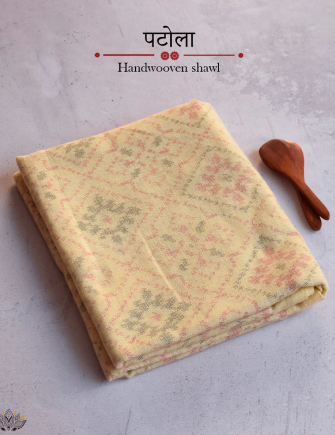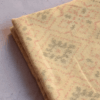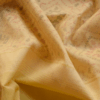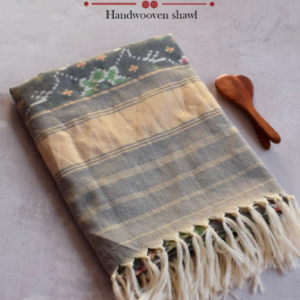The word ‘ikat’ is derived from the Malay-Indonesian word ‘mengikat’ which translates to ‘to tie’. Over time, ikat from India became known for its use of fine materials and production improvements. It was even considered a form of currency on the famed Silk Road. Andhra Pradesh and, subsequently, the separated state of Telangana, are celebrated as the place of birth of Indian ikat. The most distinct ikat of Andhra Pradesh is the Telia Rumal, which is charactrised by the obscure process of oil treating the yarn. The Nalgonda district, which is now part of Telangana state, has been the perpetual hub for ikat production. Ikat from Odisha (Orissa) is known as bandha and has always been a practised craft of the state.
Patan Patola is the most prominent product of double ikat from Gujarat. The last few decades have seen Rajkot and its neighbouring villages produce sarees similar in design to Patan Patola but in single ikat – using the technique of either warp or weft, unlike double ikat which employs the use of both. These are locally known as Rajkot Patola.
The migrant Vankar and the historical Maheshwari communities, now the native weavers of Rajkot and Surendranagar have mastered the technique of weaving musical compositions in cloth. Popat (parrot), Narikunj, Phulwadi, Chowkdi (cross), Chaabdi (Basket), Choktha, Navratna, Paanchphul, Sarvaiya, Laheriya are some of the patterns of Patola.
Preparation:
The preparation of Patola is an elaborate process. Following are the seven main steps of preparing a Patola:
~Sourcing of raw materials, Buying silk from the market.
~Making the weft.
~Tying the knots on the warp and weft according to the design.
~Process of dyeing: The weft silk threads are tied separately with cotton thread on the portions already marked out in conformity with the proposed design in the fabric. This tied portion is meant to remain unexposed to the colour while dyeing. United portion, which has absorbed one colour, may be tied while dyeing in another colour. Tying untying, re-tying and dyeing in different shades are the main features of this process. After completion of dyeing work of wefts, the threads of the warp are put together in a sequence on the loom, so that the design becomes visible. The threads of wefts are wound on to bobbins and kept in the bamboo shuttle for weaving process.
~Process of adjusting each threads of warp and weft: The tension of the warp threads is removed by the help of needle after every 8 to 10 inches are woven. Patola weaving is a highly accurate just a positioning of warp and weft of similar colour to obtain perfect design and harmony. The process is labour intensive, time consuming and requires high order of skill and dexterity.
~Process of finishing the fabrics. It takes about 10-12 days to prepare tie- dyed design on warp and weft threads for a sari that is 6 yards in length and 48 inches wide. Two weavers working together weave just about 8 to 9 inches a day. It takes about 7 days to weave a complete Stole.









